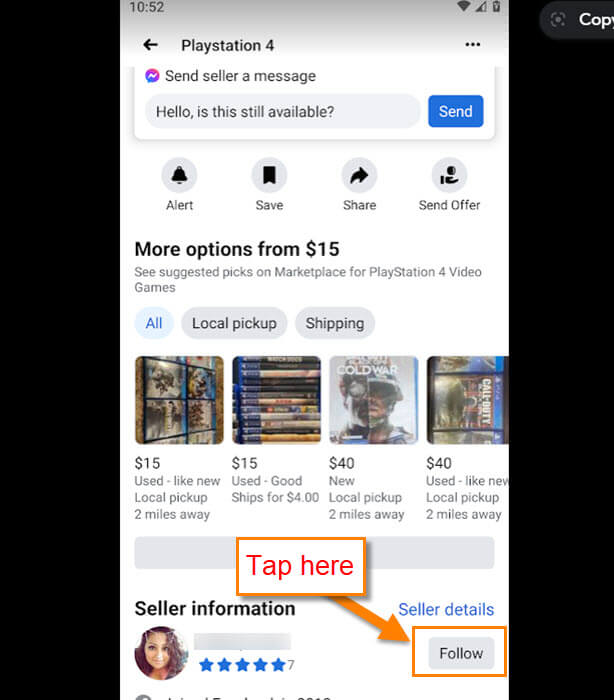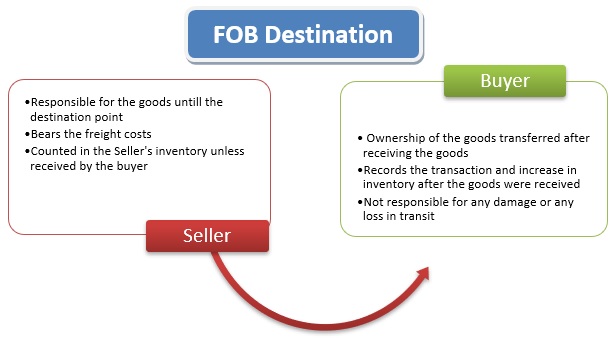Understanding the Basics of Facebook Marketplace Transactions
Facebook Marketplace is a platform that allows users to buy and sell items within their local communities. With millions of active users, it has become a popular destination for people looking to declutter their homes, find great deals, or start a small business. When it comes to transactions on Facebook Marketplace, understanding the basics is crucial to ensuring a smooth and successful experience. This includes knowing who pays for shipping, which can be a significant factor in the overall cost of an item.
On Facebook Marketplace, buyers and sellers can connect with each other to purchase and sell a wide range of items, from electronics and furniture to clothing and accessories. The platform provides a convenient way for people to browse and purchase items from the comfort of their own homes. However, when it comes to shipping, the process can be a bit more complex. Who pays for shipping on Facebook Marketplace is a common question that many buyers and sellers have, and it’s essential to understand the platform’s policies and guidelines to avoid any confusion or disputes.
In general, Facebook Marketplace does not have a set policy on who pays for shipping. Instead, it is up to the buyer and seller to agree on the terms of the sale, including who will cover the cost of shipping. This can be negotiated through the platform’s messaging system, where buyers and sellers can discuss the details of the sale and come to a mutually agreeable arrangement. However, it’s essential to note that Facebook Marketplace does offer a shipping labels feature, which allows sellers to purchase and print shipping labels directly from the platform. This feature can simplify the shipping process and provide a more convenient experience for both buyers and sellers.
Understanding the basics of Facebook Marketplace transactions, including who pays for shipping, is vital to ensuring a successful and stress-free experience. By knowing the platform’s policies and guidelines, buyers and sellers can navigate the process with confidence and avoid any potential disputes or issues. In the next section, we will explore the general guidelines for who pays for shipping on Facebook Marketplace and provide tips and strategies for negotiating shipping costs.
Who Covers Shipping Costs on Facebook Marketplace?
When it comes to shipping costs on Facebook Marketplace, the platform’s official policy is that the buyer and seller are responsible for negotiating and agreeing on who will cover the cost of shipping. This means that there is no set rule or default setting for who pays for shipping, and it’s up to the parties involved to come to a mutually agreeable arrangement.
In general, the buyer is often expected to pay for shipping, especially for smaller items or those that are being shipped over long distances. However, this can vary depending on the specific circumstances of the sale and the agreement reached between the buyer and seller. For example, if the seller is offering free shipping or a discounted rate, this may be factored into the overall price of the item.
Facebook Marketplace does provide some guidance on shipping costs in its help center, which suggests that buyers and sellers should discuss and agree on shipping costs before completing a transaction. The platform also recommends that sellers clearly state their shipping policies and costs in their item descriptions to avoid any confusion or disputes.
While there is no one-size-fits-all answer to the question of who pays for shipping on Facebook Marketplace, understanding the platform’s policies and guidelines can help buyers and sellers navigate the process with confidence. By communicating clearly and coming to a mutually agreeable arrangement, parties can ensure a smooth and successful transaction.
In addition to negotiating shipping costs, buyers and sellers should also consider other factors that can affect the overall cost of shipping, such as the type of item being sold, the distance between the buyer and seller, and any additional services or fees that may be required. By taking these factors into account, parties can ensure that they are getting the best possible deal and avoiding any potential disputes or issues.
Factors That Influence Shipping Cost Responsibility
When it comes to determining who pays for shipping on Facebook Marketplace, several factors can influence the decision. Understanding these factors can help buyers and sellers navigate the process and come to a mutually agreeable arrangement.
One of the primary factors that can affect shipping cost responsibility is the type of item being sold. For example, if the item is large or heavy, the seller may be more likely to require the buyer to pay for shipping. On the other hand, if the item is small and lightweight, the seller may be more willing to cover the cost of shipping.
The distance between the buyer and seller is another factor that can influence shipping cost responsibility. If the buyer and seller are located in the same city or region, the seller may be more likely to cover the cost of shipping or offer a discounted rate. However, if the buyer and seller are located in different states or countries, the buyer may be more likely to pay for shipping.
Any agreements made between the buyer and seller can also affect shipping cost responsibility. For example, if the buyer and seller agree to a specific price for the item, the seller may be more likely to cover the cost of shipping. On the other hand, if the buyer and seller agree to a lower price for the item, the buyer may be more likely to pay for shipping.
In addition to these factors, the seller’s shipping policies can also influence shipping cost responsibility. For example, if the seller offers free shipping on all items, the buyer will not be responsible for paying for shipping. However, if the seller charges a flat rate for shipping, the buyer will be responsible for paying that rate.
Understanding these factors can help buyers and sellers navigate the process of determining who pays for shipping on Facebook Marketplace. By considering the type of item being sold, the distance between the buyer and seller, and any agreements made between the parties, buyers and sellers can come to a mutually agreeable arrangement and avoid any potential disputes or issues.
How to Negotiate Shipping Costs with Buyers or Sellers
Negotiating shipping costs on Facebook Marketplace can be a straightforward process if both parties are clear about their expectations. To ensure a smooth transaction, it’s essential to communicate effectively and come to a mutually agreeable arrangement.
When negotiating shipping costs, buyers and sellers should consider the following tips:
Clearly state your shipping policies: Sellers should clearly state their shipping policies, including the cost of shipping, in their item descriptions. This will help avoid any confusion or disputes down the line.
Ask questions: Buyers should ask sellers about their shipping policies and costs before making a purchase. This will help ensure that both parties are on the same page.
Be flexible: Buyers and sellers should be flexible when negotiating shipping costs. If the seller is unwilling to cover the cost of shipping, the buyer may be able to negotiate a lower price for the item.
Use Facebook Marketplace’s messaging system: Facebook Marketplace’s messaging system allows buyers and sellers to communicate with each other directly. This is a great way to negotiate shipping costs and come to a mutually agreeable arrangement.
Consider using a shipping cost calculator: Facebook Marketplace offers a shipping cost calculator that can help buyers and sellers estimate the cost of shipping. This can be a useful tool when negotiating shipping costs.
By following these tips, buyers and sellers can negotiate shipping costs effectively and come to a mutually agreeable arrangement. Remember to always communicate clearly and be flexible when negotiating shipping costs on Facebook Marketplace.
Common Shipping Cost Scenarios on Facebook Marketplace
When it comes to shipping costs on Facebook Marketplace, there are several common scenarios that may arise. Understanding these scenarios can help buyers and sellers navigate the process and avoid any potential disputes or issues.
Scenario 1: Buyer Pays for Shipping
In this scenario, the buyer is responsible for paying for shipping. This is often the case when the seller is shipping an item to a buyer in a different state or country. The seller will typically specify the shipping cost in the item description, and the buyer will be responsible for paying that amount.
Scenario 2: Seller Pays for Shipping
In this scenario, the seller is responsible for paying for shipping. This is often the case when the seller is shipping an item to a buyer in the same state or region. The seller may choose to absorb the cost of shipping as a way to attract more buyers or to build customer loyalty.
Scenario 3: Split Shipping Costs
In this scenario, the buyer and seller split the cost of shipping. This is often the case when the item is heavy or bulky, and the seller wants to share the cost of shipping with the buyer. The seller will typically specify the shipping cost in the item description, and the buyer will be responsible for paying half of that amount.
Scenario 4: Disputes Over Shipping Costs
In this scenario, a dispute arises over who is responsible for paying for shipping. This can happen when the seller and buyer have different understandings of who is responsible for paying for shipping. To resolve this issue, the buyer and seller can use Facebook Marketplace’s reporting and resolution tools to come to a mutually agreeable arrangement.
By understanding these common shipping cost scenarios, buyers and sellers can navigate the process with confidence and avoid any potential disputes or issues. Remember to always communicate clearly and come to a mutually agreeable arrangement when it comes to shipping costs on Facebook Marketplace.
Using Facebook Marketplace’s Shipping Labels Feature
Facebook Marketplace’s shipping labels feature is a convenient and time-saving tool that allows sellers to purchase and print shipping labels directly from the platform. This feature can simplify the shipping process and help sellers save time and money.
To use the shipping labels feature, sellers can follow these steps:
1. Go to the Facebook Marketplace page and click on the “Sell” button.
2. Select the item you want to sell and click on the “Ship” button.
3. Enter the buyer’s shipping address and select the shipping carrier and service level.
4. Review the shipping cost and click on the “Purchase Label” button.
5. Print the shipping label and attach it to the package.
The shipping labels feature is available for sellers who use Facebook Marketplace’s payment system, and it can be used for domestic and international shipments. Sellers can also use the feature to purchase shipping insurance and track their packages.
Using the shipping labels feature can help sellers save time and money by streamlining the shipping process and reducing the risk of errors. It can also help improve the buyer’s experience by providing a more efficient and reliable shipping process.
In addition to the shipping labels feature, Facebook Marketplace also offers a range of other tools and resources to help sellers manage their shipments and resolve any issues that may arise. These tools include the ability to track packages, update shipping information, and communicate with buyers.
By using the shipping labels feature and other tools and resources available on Facebook Marketplace, sellers can simplify the shipping process and provide a better experience for their buyers.
Best Practices for Buyers and Sellers to Avoid Shipping Disputes
To avoid shipping disputes on Facebook Marketplace, buyers and sellers should follow best practices to ensure a smooth and successful transaction. Here are some tips to help you avoid shipping disputes:
Clearly communicate expectations: Buyers and sellers should clearly communicate their expectations regarding shipping costs, delivery times, and packaging. This can help prevent misunderstandings and disputes.
Use Facebook Marketplace’s messaging system: Facebook Marketplace’s messaging system allows buyers and sellers to communicate with each other directly. This can help resolve any issues or disputes that may arise during the shipping process.
Provide detailed descriptions: Sellers should provide detailed descriptions of the item being sold, including its condition, weight, and dimensions. This can help buyers understand the shipping costs and avoid any disputes.
Use shipping labels: Sellers can use Facebook Marketplace’s shipping labels feature to purchase and print shipping labels directly from the platform. This can help simplify the shipping process and reduce the risk of errors.
Track packages: Buyers and sellers can track packages using Facebook Marketplace’s tracking feature. This can help ensure that packages are delivered on time and reduce the risk of disputes.
Resolve disputes promptly: If a dispute arises, buyers and sellers should resolve it promptly using Facebook Marketplace’s reporting and resolution tools. This can help prevent the dispute from escalating and ensure a smooth transaction.
By following these best practices, buyers and sellers can avoid shipping disputes on Facebook Marketplace and ensure a smooth and successful transaction.
Resolving Shipping Cost Disputes on Facebook Marketplace
If a dispute arises related to shipping costs on Facebook Marketplace, buyers and sellers can take steps to resolve the issue. Here are some steps to follow:
1. Communicate with the other party: Buyers and sellers should communicate with each other to try to resolve the dispute. This can be done through Facebook Marketplace’s messaging system.
2. Use Facebook Marketplace’s reporting tool: If the dispute cannot be resolved through communication, buyers and sellers can use Facebook Marketplace’s reporting tool to report the issue. This will alert Facebook’s customer support team, who can help resolve the dispute.
3. Provide evidence: Buyers and sellers should provide evidence to support their claim, such as receipts, tracking numbers, or photos of the item.
4. Follow Facebook’s resolution process: Facebook’s customer support team will review the dispute and follow a resolution process to resolve the issue. This may involve refunding the buyer or requiring the seller to pay for shipping.
5. Escalate the dispute: If the dispute cannot be resolved through Facebook’s resolution process, buyers and sellers can escalate the dispute to a third-party dispute resolution service, such as PayPal or a credit card company.
By following these steps, buyers and sellers can resolve shipping cost disputes on Facebook Marketplace and ensure a smooth transaction.
It’s also important to note that Facebook Marketplace has a set of policies and guidelines in place to help resolve disputes related to shipping costs. These policies include:
Facebook Marketplace’s Shipping Policy: This policy outlines the responsibilities of buyers and sellers when it comes to shipping costs.
Facebook Marketplace’s Dispute Resolution Policy: This policy outlines the steps that buyers and sellers can take to resolve disputes related to shipping costs.
By understanding these policies and following the steps outlined above, buyers and sellers can resolve shipping cost disputes on Facebook Marketplace and ensure a smooth transaction.








